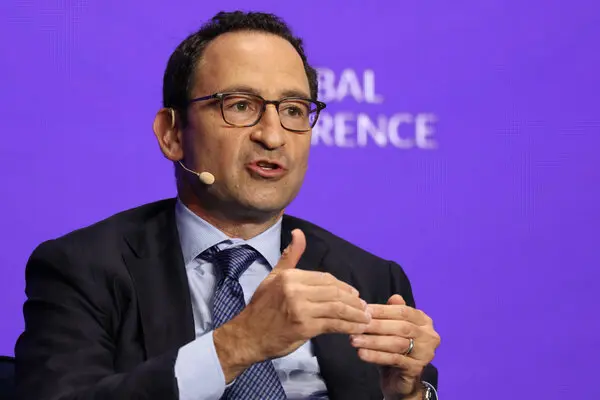Why Jon Gray on AI Investment is the Most Important Talk You’ll Read in 2025
In an era where artificial intelligence is reshaping every industry, understanding how top minds deploy capital around AI is no longer optional – it’s imperative. That’s why Jon Gray on AI investment is an essential lens into not just how Blackstone is navigating this transformation, but how you can too. Starting within the first 100 words, this article dissects Gray’s vision, the trends he’s betting on, and how you can align your strategy accordingly.
At Blackstone’s 2025 CIO Symposium, Gray called AI “the main thing” – not just a buzzword but a foundational force driving a new industrial revolution. Blackstone Whether you’re an institutional investor, a business owner, or a tech strategist, this briefing from the front lines offers indispensable perspective.
The Stakes of AI in 2025: What’s Changing & Why It Matters
The Macro Backdrop: Economy, Inflation & Capital Cost
Gray’s analysis begins with macro signals. Despite global uncertainty, Blackstone’s internal portfolio showed ~8% revenue growth and rising margins, even as headline data painted a bleaker picture. The Singju Post He argues that their data – gleaned in real time from portfolio companies – often leads public indicators by 6–12 months. The Singju Post
He also challenges consensus inflation figures. Though official CPI shelter costs are ~3.6%, Blackstone’s rental housing data indicates ~2.0%, implying true inflation may be lower than widely believed. That dynamic, once fully understood by markets, could push the cost of capital downward – favorable for investment.
AI as the “Main Thing” – More Than a Hype Cycle
Gray insists AI is not a side show. It’s the organizing principle. Blackstone He sees AI triggering a productivity boom that could rival the tech surge of the 1990s. In his speech, Gray drew a parallel to 1989–1994: in that span, productivity grew ~4% cumulatively (less than 1% annual), but post-1994 it accelerated dramatically.
He warns, however, of the risks of overexuberance. Just as the dot-com bubble burst, speculative AI infrastructure buildouts could create stranded assets. The Singju Post
Sound risk assessment is built into every Blackstone investment memo now. PMI
Who’s Gaining, Who’s Losing: Labor & Capital Shifts
Gray provides a clear framework for winners and losers:
- At risk: Entry-level software developers, customer service agents – roles where AI is already displacing early career employees. Business Insider
- More insulated: Roles grounded in physical operations – stock clerks, health aides – have not seen major disruption yet. Business Insider
- Opportunities: Infrastructure, “picks and shovels” plays (power, data centers, bandwidth), and rules-based businesses (e.g. accounting, back-office processing). Business Insider
For instance, Gray points to Blackstone’s investments in AGS Health, Citrin Cooperman, and Norm AI — firms that automate regulatory, claims, and compliance tasks.
This is not theory: Blackstone has dedicated a section in every deal memo to “AI or tech disruption risk.”
Desire
What You Can Learn & Apply from Jon Gray on AI Investment
Strategy 1: Focus on Infrastructure & Foundations
Rather than betting all your chips on AI product companies, Gray emphasizes backing the underlying systems:
- Data centers (especially co-located with power)
- Power generation & grid upgrades
- Compute, storage, networking
These are the scaffolding that enable AI models to operate at scale. PMI
Already, Blackstone is acting. In July 2025, it committed $25 billion to new data center and natural gas plant projects in Pennsylvania, pairing power and compute in co-location schemes to reduce latency and development friction. Reuters
This playbook is durable: even if an AI architecture shifts, the infrastructure will still be needed (or repurposed).
Strategy 2: Selective AI Adopters vs Speculators
Gray avoids the trap of overinvesting in speculative AI startups without product-market fit. Instead, he leans toward “directionally aligned, durable business models” — those with defensible moats, real customers, and recurring cash flow. The Singju Post
He also demands rigorous operating discipline and downside protection, insisting on stress tests of valuation under multiple scenarios.
Strategy 3: Integrate AI into Legacy & Rule-Driven Processes
One of the underappreciated themes in Gray’s vision is applying AI to existing, labor-intensive domains:
- Claims processing, insurance, accounting
- Regulatory compliance
- Healthcare back-office work
These domains may not generate the headline interest of gen-AI, but they produce real value and high margins when scaled.
Strategy 4: Stay Flexible, Watch Disruptors
Gray acknowledges one major wildcard: innovations like DeepSeek (a highly efficient AI model from China) could compress compute demand and disrupt data center economics. Business Insider
But his answer is not panic — it’s diligence. Each investment is stress-tested to adapt to heightening efficiency across models. Moreover, lower compute cost may paradoxically increase usage (the “Jevons paradox”), potentially driving more overall demand. Business Insider
Strategy 5: Use Internal Data as a Leading Indicator
Gray’s recurring theme is that Blackstone’s own portfolio generates signals ahead of public data release. By observing revenue trends, margins, hiring, and capital expenditures across their companies, they triangulate macro turns earlier.
For ambitious firms or investors, this suggests building instrumentation into your operations — even small, consistent signals can be predictive.
Action
5 Steps You Can Take Today (Inspired by Jon Gray on AI Investment)
- Map your AI “backbone” exposure
Identify which infrastructure layers (e.g. power, networking, storage) your business or portfolio touches. Can you lean into bottlenecks instead of chasing end-user AI? - Audit AI disruption risk
For each business line, ask: is this function automatable? Should AI stress scenarios be included in your financial model for the next 5 years? - Pilot “adjacent AI” initiatives
Start with low-hanging, rule-driven AI applications (compliance, claims, invoice processing) rather than unproven generative projects. - Build internal signal tracking
Even simple dashboards — weekly revenue per product, hiring rates, supply chain delays — can help you detect macro inflections before they make headlines. - Stress-test your capex and valuation models
Incorporate scenarios of falling compute cost, regulatory constraints, or stranded infrastructure. Optimize for downside resilience, not just upside.
“You don’t have to be Bill Gates in a garage… any function can give you the opportunity to be entrepreneurial.” – Jon Gray Columbia Business School
Leverage your domain expertise. You don’t have to invent AI – you just have to harness its structural shifts wisely.
Analytical / Thematic Sections (Expanded)
1. AI & Infrastructure: Why Power Is the New Plastics
Gray’s metaphor – “power is the new plastics” – is apt: energy and compute are now central inputs, not peripheral cost centers. Business Insider
He argues that over a 25-year historical span, U.S. power demand was relatively flat, but under AI’s influence, it could grow ~40% as data centers, chip fabs, and continuous training/inference pipelines scale. PMI
Therefore, investing in renewables, generation, transmission, and co-located power+compute becomes just as vital as building the AI models themselves.
2. AI Disruption on Labor: The New Dividing Lines
Gray uses empirical data (e.g. Stanford research) to show how AI is already affecting certain early-career cohorts in software and customer service roles. Business Insider
He coins the term “claw code effect” to refer to generative AI displacing junior coders. Business Insider
Yet disruption is uneven. He points to roles with structured rules, high volume, and scalability potential – not high-touch creative or relational work. That pattern matters when plotting career or investment moves.
3. Private Credit, Commercial Real Estate & Alternatives
While AI is central, Gray does not abandon Blackstone’s other pillars. He sees opportunity in:
- Commercial real estate: supply has shrunk ~70% in certain segments like logistics, while capital costs fall. The Singju Post
- Private credit: bypassing traditional intermediaries, Gray sees private lending as unlocking margins and direct capital flow. Columbia Business School
These are complementary angles – your AI thesis doesn’t have to exclude real assets or credit exposure.
4. Risk, Valuations & the Bubble Risk
Gray’s prudent caution shines through. He alerts listeners to potential misallocations, overbuilding of empty data centers, and valuation froth reminiscent of past tech bubbles. The Singju Post
One tactical principle: every investment must assume compute gets cheaper. That’s the padding you need to safeguard against disruption from more efficient models or architectures.
People Also Asked (FAQ)
Q1. What did Jon Gray mean by AI being “the main thing”?
He meant that AI isn’t just a trend – it’s the organizing axis for growth, productivity, and investment in the next decade. Infrastructure, compute, applications – all revolve around it. Blackstone
Q2. How is Blackstone investing in AI infrastructure?
Through data centers, power generation, co-location strategies, capacity deals, and capital backing rules-based firms (e.g. compliance, claims). Reuters
Q3. Which jobs are at risk from AI, according to Gray?
Early career coders, entry-level customer service agents, roles with commoditized tasks. Business Insider
Q4. What is DeepSeek and how could it affect AI investment?
DeepSeek is a Chinese AI model with extreme efficiency. If it gains adoption, compute demand could compress and force infrastructure rethinking. Business Insider
Q5. How can small firms or investors use Gray’s strategies?
By focusing on backbone infrastructure, auditing disruption risk, piloting AI in rule-based domains, building internal signal dashboards, and stress-testing models for downside scenarios.
Conclusion
Jon Gray on AI investment offers a rare vantage point: a capital allocator who sees AI not as a fad but as the structural axis of the next decade. His playbook is balanced – bold bets on infrastructure, rigorous risk discipline, and bottom-up signals from a global portfolio.
The key takeaway: you don’t need to build the next chatbot to benefit from AI. You just need to align with its foundations – power, compute, rules, and resilient models.
“You don’t have to be Bill Gates in a garage… any function can give you the opportunity to be entrepreneurial.”
– Jon Gray, emphasizing that strategic insight – not hype chasing – wins.



